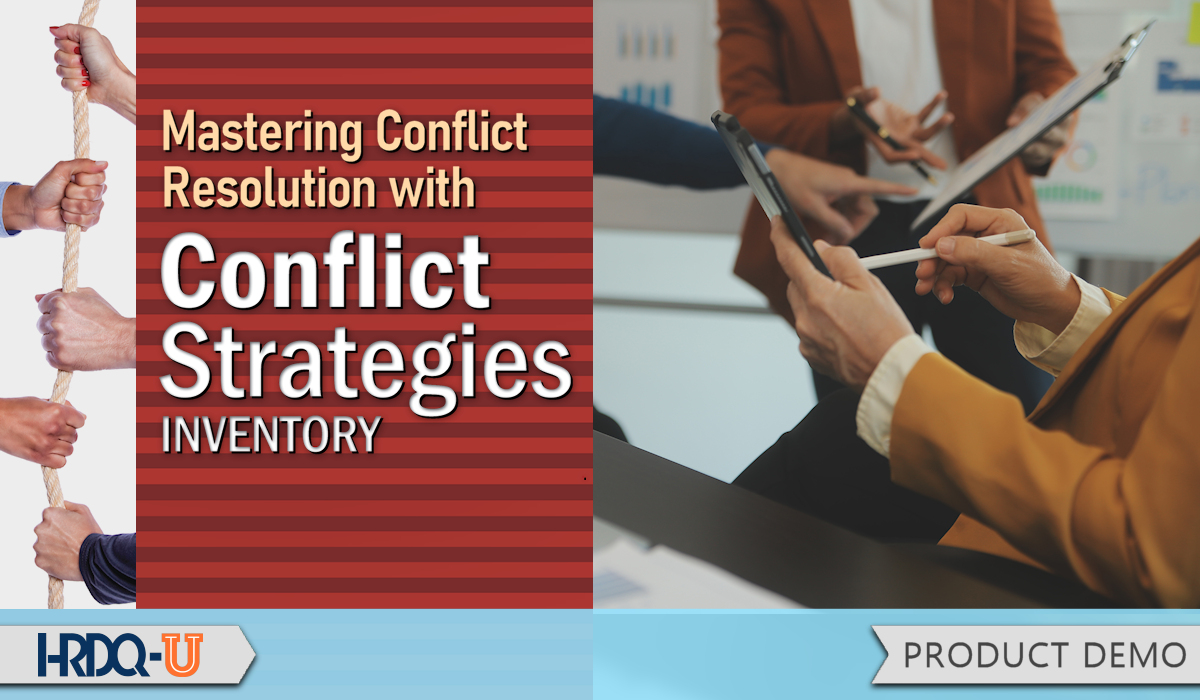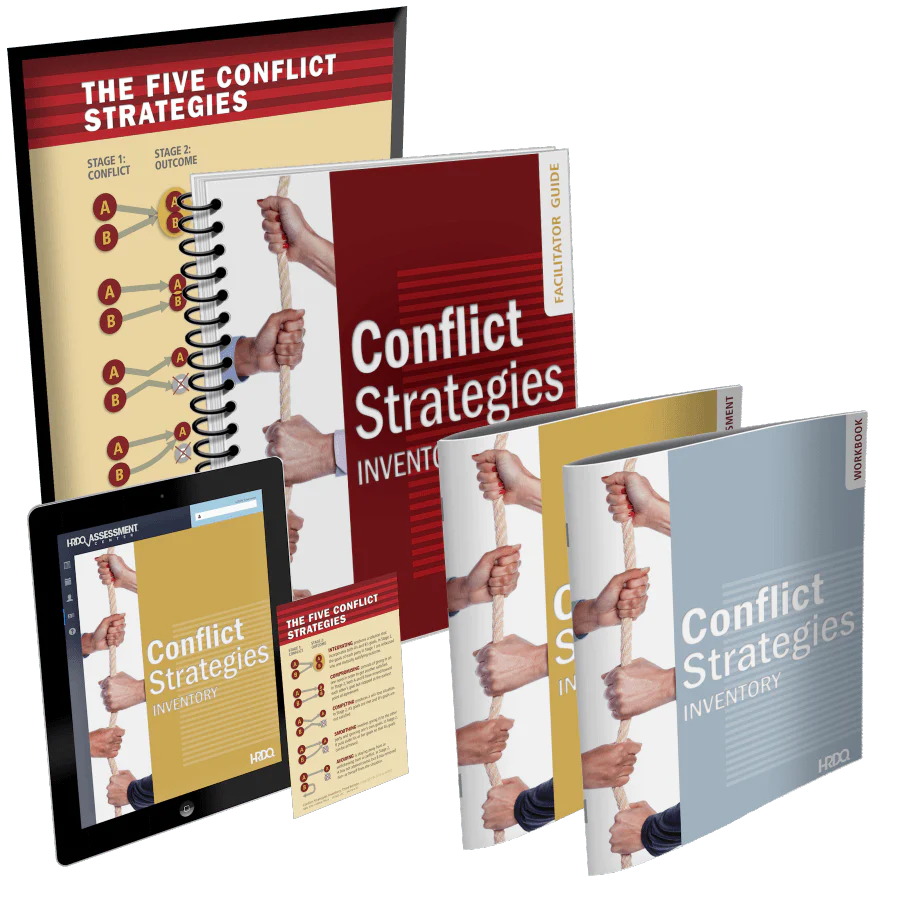What Is Positive Conflict?
Positive conflict helps you and your team grow by encouraging open discussions and different perspectives. Negative conflict, on the other hand, focuses on blame. Positive conflict was built to solve problems together. When you and your colleagues try respectful debates, you’re more likely to come up with fresh solutions.
Think about it. When everyone on your team feels safe to voice their differing opinions, you get a mix of ideas. Respectful communication broadens your thinking and boosts creativity and innovation. Have you ever been part of a healthy debate that ended up leading to an “aha” moment? That’s positive conflict in action, and it’s helpful for progress.
In a team where shared respect is the foundation, you appreciate each other’s views even if you disagree. This strategy often focuses on finding the best answer for everyone. You sometimes get to multiple angles before settling on a course of action. This way, you also ensure every perspective is heard.

Remember, collaborative problem-solving is another scenario where positive conflict thrives. Imagine you’re working on a complicated project with team members who bring different expertise to the table. Through open and respectful discussion, you address issues more effectively and create a real sense of unity and shared effort. Have you seen that when different minds collaborate, the results are usually impressive? This strategy helps you combine strengths.
Constructive feedback also plays a big part in creating positive conflict. When you give and receive feedback respectfully, it really helps everyone involved grow, personally and professionally. This kind of interaction builds trust and strengthens relationships within the team. Just to give you a simple example, when a colleague points out a blind spot in your work, it lets you improve and stay away from the same mistake in the future.
It’s important to also recognize problems early. Being involved with conflict means you’re more likely to spot issues sooner, which makes it easier to address them before they escalate. This proactive approach saves time and resources and helps maintain a balanced work environment. You get to fix problems before they become bigger issues.
Adding these elements into your team’s culture can cause stronger interpersonal relationships and a more effective, efficient team. You might note the environment becoming much more collaborative over time. This can really help with how you work together.
Foster Open Communication
Positive conflict opens up communication within your team. You welcome sharing ideas and opinions by appreciating differing views. Imagine a company setting an easy rule like no interruptions during discussions. This practice changes communication habits – everyone can voice their thoughts without fear.
Different views are valuable. You get better discussions and, finally, make smarter choices. Picture those times when an unexpected answer popped up because you thought about a lot of perspectives. These moments help with decisions and build a culture of respect and inclusivity. This happens because people feel heard.
It won’t always be smooth because miscommunication might sneak in. You should set clear expectations and actively listen to avoid this. Using neutral language can also help you stay away from misunderstandings.
Sometimes, unproductive tension arises. You need to address conflicts fast and find solutions to keep things running. In cultures where feedback is encouraged, what looks like a disagreement might really be a new way of expressing an idea.

Active feedback and empathy can turn conflicts into positive experiences. This helps everyone – from large businesses to small teams. Imagine a project where constructive feedback spurred innovation! Your team could also grow and innovate through open dialogue.
You might fear conflict, but it strengthens trust and unity. Openly talking about different views and resolving conflicts together builds mutual respect and shared goals. Wouldn’t you want a team where everyone trusts one another and works toward common goals?
Accepting different perspectives nurtures an open culture. When you respect everyone’s opinion, communication flows more freely. This goes beyond meeting rooms – positive conflict improves communication and also strengthens relationships throughout your workplace.
You don’t just think about summarizing. Think about how tackling conflicts and respecting a lot of views can make your team more innovative and better.
Why Challenging Ideas Is Crucial
Questioning ideas is so crucial for making progress. You might hesitate to question ideas and want to stay away from conflict. But this avoidance can hold back innovation. Try to push your team members to think more critically and help with their ideas with constructive criticism. When everyone agrees and doesn’t think critically, that’s groupthink – and groupthink can really limit your team’s growth and creativity. You’re making sure everyone respectfully challenges each other’s thoughts to stay away from this trap.
You probably know that some studies show teams involved in positive conflict sometimes have better outcomes. Just to give you an example, criticism usually boosts creativity and imagination when working together! So, you push people to think outside their usual boxes by questioning ideas. When you think critically about a colleague’s idea, you help them and the team spot flaws or weaknesses. This will probably cause more innovative services.
You should always remember that respect is key. When questioning ideas, it’s important to start with the idea and not the person to keep a constructive area. But the goal is finding the best answer and making better choices together. Open debate sparks creativity and leads to fresh solutions.

Bringing different views into the mix helps your team tap into wider knowledge and perspectives, which can help with problem-solving abilities.
Try respectful conflict to boost collaboration and build trust in your team. When you talk about and resolve ideas openly and together, it strengthens team bonds quite a bit. Everyone starts feeling their input is appreciated, motivating them to contribute more freely.
Use a growth mindset to allow risk-taking and learning from failures. This strategy makes you more flexible and open to new ideas, helping personal and team growth. It’s like playing on the same team with different plays, which makes the team stronger overall.
Builds Stronger Relationships
Positive conflict can really help with your team’s relationships. When you address disputes together, you start to trust and respect each other quite a bit more. You might think about how a little friction can help two pieces of metal fit together better over time. Trust and respect lay the groundwork for a more united team. When you trust someone, you definitely feel more comfortable sharing your thoughts.
Always sort out disagreements nicely. It’s useful to resolve conflicts in a friendly way. When you do this, you all get better at communicating. Imagine working with someone who listens to your issues and doesn’t judge you – that’s how you build strong and long-term relationships. Good communication is a must for a solid team environment.
Most people find open conversations help with communication in a big way. Dealing with conflicts openly gets everyone on the same page. This, then, speeds up decisions! Have you ever seen a team that avoids misunderstandings because they communicate well? That’s no coincidence. Clear communication keeps everything running smoothly.
You’ll also experience growth, personally and professionally, from positive conflict. Challenging your own assumptions and seeing things from a new perspective can be really enriching. You can think of it like a workout for your mind – it makes you stronger and more flexible. Seeing things differently can add quite a bit to your skills and knowledge. It’s excellent for your personal and work life.
Think about the productivity boost you’ll get from resolving conflicts faster and positively. When issues get sorted out fast, there’s less stress and more time to start new work. How much more could you and your team accomplish without lingering disputes? Imagine the energy you’ll save and the projects you’ll finish.

If you look at successful businesses, you see how these ideas work in action. Pixar and Apple use conflict as a growth tool, leading to success and strong teamwork. These examples are inspiring because they show how to turn roadblocks into stepping stones. Learning from the best can give you new ideas for improvement.
Don’t discount the power of feedback in resolving conflicts. This definitely strengthens trust and safety in your team. It’s the glue that holds everything together. Taking the time to listen closely to what someone else is saying can make a big difference in resolving issues.
Conflict has opportunities for organizational learning, too. Finding and tackling underlying issues can lead to significant improvements in your processes. Imagine how you and your organization can grow continually. Continuous improvement keeps your organization on the right path.
Part of being involved in constructive conflicts leads to personal growth as well. You get to develop new skills and expand your outlook. See your next disagreement as a chance to grow and learn something new – embrace it and come out stronger.
That’s exactly why positive conflict can be a big benefit for your team’s growth. When you address conflicts head-on and see them as opportunities, everyone wins. You build trust, enhance communication, and grow personally and professionally. Don’t be afraid of disputes – use them for your team’s benefit.
Encourages Creative Solutions
You can spark creative solutions by making sure everyone shares and values different views. Have you ever felt how brainstorming gets super fun when everyone is on board with sharing their ideas? You see, that lets team members freely express differing opinions, bringing new perspectives to the table. This combination of ideas then ignites creativity in pretty interesting ways you maybe didn’t even think were possible.
To create a space where everyone feels safe to share their ideas, think of it just like having a safety net for their thoughts. Imagine bouncing thoughts around without any fear of being ridiculed. This builds trust among your team. You’ll see that trust makes it so much easier to work together and solve difficult problems faster. One study by Google even showed that teams with high psychological safety performed way better! It really shows that trust is the foundation of positive conflict.
When improving creativity and innovation, that’s a huge plus. When different views clash in a good way, your creative thinking gets a huge boost. Imagine a debate where each person has a take on the topic. These clashing ideas sometimes cause wild breakthroughs. Think about Pixar and their famous “Brain Trust” meetings. They welcome open and honest discussions, which lead to pretty interesting creativity and hit movies.

Making better choices is also a big plus. Multiple perspectives give you a more complete view, like a 360-degree snapshot of the situation. This helps you place risks and opportunities more clearly. That leads to better services. Did you know Forbes found that varied teams make better business choices 87% of the time That’s pretty convincing, right?
You can also sharpen your problem-solving skills naturally. Different opinions push you to think outside the box, almost like piecing together a challenge with parts from different sets. You need creativity and flexibility to make it all work. When done right, you get services that address several parts of the problem at once.
So, you should welcome different perspectives because they’re valuable. Leadership is crucial here. Leaders should allow respectful debates and also show how it’s done. Acknowledge everyone’s opinion and listen actively. Getting involved in this way builds stronger team relationships and improves commitment to team goals.
Try to build trust and collaboration through positive conflict. When team members feel valued, shared respect and stronger relationships form naturally. This leads to better teamwork and more helpful services, which turns your team into a productivity and creativity powerhouse.
When Does Conflict Go Too Far?
Conflict within your team isn’t always bad. When you handle it well, it can help your team grow. But not all conflict is helpful. When conflict goes too far, it can cause personal attacks, lower morale, and create a toxic work environment. So, let’s talk about how you can spot these signs and turn things around.
When personal attacks start to show up, you know the conflict has gone off the rails. Personal attacks can make a very toxic space where stress and worry are everywhere. Can you imagine a place where everyone feels on edge? That sounds awful, right? Innovation or collaboration won’t ever flourish there. Start with clear and open communication to prevent misunderstandings that grow into personal grudges. Open communication lets everyone get to know each other better, reducing the risk of conflict.
Often, lowered morale usually follows closely behind. Negative attitudes and lack of enthusiasm at meetings are clear signs that your team’s spirit is sinking. Can you imagine a room full of people who just don’t want to be there? Try tackling issues early during regular one-on-one meetings to bring back that lost enthusiasm. When you make people feel heard, they are more likely to join in and care about the team.
The worst part of unchecked conflict is a toxic work environment. High turnover rates and less productivity are big red flags here. Think about how much it costs to train new employees because others couldn’t stand the toxic environment. You can help by making sure everyone’s voice is heard, and resources are fairly distributed. Active feedback will help you find the root problems before they get worse. Show empathy and set a positive tone for the whole team.

So, how can you address unhealthy conflict? Add conflict resolution training. It gives you and your team the tools needed to handle disagreements well. Yes, it might sound formal, but it can save everyone a lot of headaches. Encourage your team members and managers to develop skills that avoid escalation. Regular training stops conflict from turning into something harmful.
But conflict isn’t always terrible. You see a problem when it causes absenteeism, low engagement, or petty arguments. Create a space where your team feels safe to share different opinions without fearing personal attacks. This strategy cuts down on toxic behavior and strengthens the team’s foundation.
Don’t underestimate the importance of a culture that promotes healthy conflict and resolution. The gains it brings in terms of team togetherness and innovative outcomes are huge. Let’s take a look into how to create an environment where healthy conflict thrives next!
Embrace Positive Conflict
When it comes to shared plans, you see that talking about positive conflict gives you a lot of perks. This really helps you drive new ideas and help with choices. You bring a fresh perspective to your team’s interactions by mixing different views to actually create new services. Always prioritize open communication and shared respect, and you’ll see that team members feel more comfortable sharing ideas. This really makes your team better and more efficient.
You should really appreciate respectful debates and active feedback. These simple actions help you generate new ideas and build trust within your team. Have you seen how a healthy disagreement can really clear the air and strengthen bonds between colleagues? Imagine how this could change your workplace for the better.
Think about growth and learning. Positive conflict challenges you to step out of your comfort zone and rethink your views. This kind of environment really pushes teams to be more flexible and strong. Picture your team excelling through constructive discussions. Often, dealing with conflicts early and openly saves you time and resources. That can help you move toward shared goals more quickly.

If you’re ready to learn about handling conflicts, join HRDQ-U, our lively learning community. You’ll find helpful resources like webinars, podcasts, and interesting blogs to help with your professional skills.
Also, make sure you don’t miss our product demo, Mastering Conflict Resolution with Conflict Strategies Inventory, led by Mike Brenner. This session is jam-packed with strategies for handling workplace conflicts, all based on years of research. Join us for this free event to get tips on improving communication and team processes! Remember to sign up now to access our large on-demand library and stay on top of HR and leadership training.

































